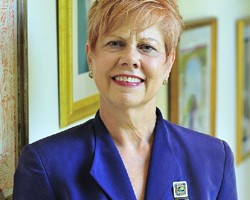Your Financial Future / Required Minimum Distributions for Baby Boomers Are Here!
By Roxanne E. Fleszar, CFP, ChFC
As of July 1st, ten thousand baby boomers a day for the next 18 years will now be required to start taking required minimum distributions (RMDs) from their tax-qualified retirement plans! Those born in 1946 are now going to pay Uncle Sam a portion of their capital gains.
Boomers have had an opportunity for years to receive a tax-deduction for their contributions to IRA’s, SEP-IRA’s, 401(k)’s, 403(b)’s and various forms of pensions. Their assets have grown on a tax-deferred basis. And they have had the ability to compound over time. That’s all good. Now they are 70.5 years old, a critical age according to our tax code.
Uncle Sam is now asking for a portion of the proceeds in these accounts via taxation. Those individuals that were born between January 1 and June 30, 1946 can elect to take their first RMD by December 31, 2016 or wait until April 1, 2017. Thereafter and RMD has to be taken by December 31st of each year.
Folks that were born between July 1 and December 31, 1946 can wait until 2017 to take their distributions by year end or April 1, 2018.
Distributions are based upon the IRS’s life expectancy tables; most people choose a single life expectancy table but if they have a spouse that is their sole beneficiary, and they are 10 years younger than the account holder, they may elect to use a joint and survivor table which will lower their RMD.
The calculation is straight forward. Take the balance as of December 31 of a tax-deferred retirement account and multiply it by the factor on the table. The factor for a 70 year old individual on a single life expectancy table is 27.4. So if they have $100,000 in an IRA, $100,000 divided by 77.4 means that the account owner must take out $3,649.63. The factor decreases each year so that the tax obligation rises over time.
Note that the account can still grow on a tax-deferred basis even while they are taking distributions. For example, at age 76, an account that has grown to $110,000 would have a factor of 22; the tax liability would be $5,000.
If a person has multiple tax-deferred accounts they can calculate the obligation on each one, but aggregate the amounts and withdraw the funds from just one account. We often do this to reduce trading costs and the need to rebalance the portfolio over numerous accounts.
If they are not a 5% owner of a firm and are working beyond age 70.5 years, they may continue to make tax-deductible contributions to a 401(k) plan (but not to an IRA). Once they stop working, RMDs begin.
I have a philanthropic client and she makes full use of ability to donate her RMD each year to charity. She chooses to gift up to the maximum of $100,000 annually which is divided among a number of charities. The gift is directed to the named organizations as required. The amount donated is not part of her taxable income, thus a win-win for her and donee! This provision was recently made permanent for 2016 and on.
[livemarket market_name="KONK Life LiveMarket" limit=3 category=“” show_signup=0 show_more=0]



No Comment